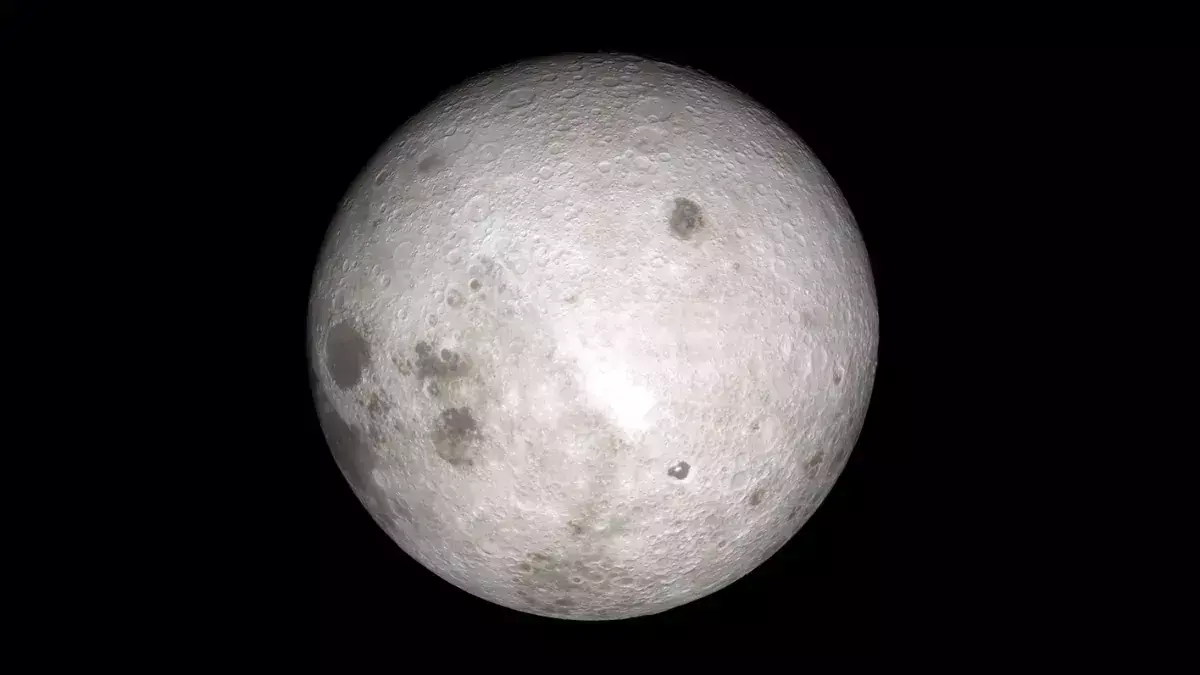NASA Finally Explains Why the Moon’s Far Side Is So Different From Its Near Side

NASA study reveals the Moon’s near side is hotter and more geologically active than the far side due to ancient volcanism and Earth's gravitational pull.
The sharp difference between the Moon's two faces—the enigmatic far side, sometimes known as the "dark side," and the well-known near side, which is constantly facing Earth—has baffled scientists for decades. Finally, we have answers because of NASA's innovative research.
A recent study that was published in Nature explains the stark differences between these two hemispheres of the Moon using data from NASA's Gravity Recovery and Interior Laboratory (GRAIL) mission. Earth's gravitational pull is a major factor in the near side's substantially warmer and more geologically active interior compared to the far side, according to the findings.
Gravity Hints Under the Surface
Researchers were able to develop a high-resolution model that depicts the Moon's minor deformation under Earth's gravity by measuring minute changes in the Moon's gravitational field. This flexing, often referred to as tidal deformation, provides information about the internal structure of the Moon.
"There is something fundamentally different about the internal structure of the Moon's near side compared to its far side," stated Ryan Park, leader of NASA's Solar System Dynamics Group at the Jet Propulsion Laboratory, "because we found that the Moon's near side is flexing more than the far side." "We were shocked by the outcome when we initially examined the data and didn't think it was real. Therefore, we performed the computations numerous times to confirm the results. This is a total of ten years of labour.
The Reasons Behind the Hotter Side
The mantle of the near side is thought to be 100–200 degrees Celsius warmer than that of the far side, according to the study. The abundance of radioactive materials like thorium and titanium on the Earth-facing side of the Moon is probably the cause of this heat differential.
Ancient volcanic activity on the near side, which produced the vast, black plains known as Mare, was fuelled in part by this tempe
Old Volcanism Sculpted the Moon
Once the near side was changed by intensive volcanism, heat-producing materials were also transported deeper into the Moon's interior, leaving behind the gravitational fingerprints GRAIL found.
Long-held beliefs that early volcanic activity created the Moon's striking asymmetry and left behind a geological record that is still discernible and quantifiable now are supported by these findings.rature imbalance. The further side, however, is still rocky, extensively cratered, and has a calmer geology.
An Insight into Planetary Science from the Moon
From regulating ocean tides to stabilising our planet's spin, the Moon is essential to life on Earth in addition to its scientific significance. The Moon's interior composition and past history are still mostly unknown, despite the fact that human and robotic missions have learnt a great deal about its surface.
Park stated that this research advances our knowledge of how the Moon and other planetary bodies changed over billions of years.

















